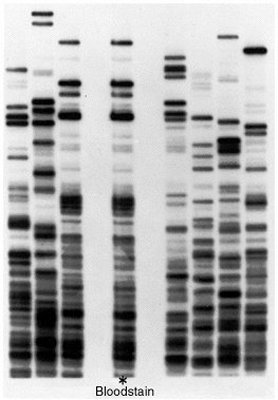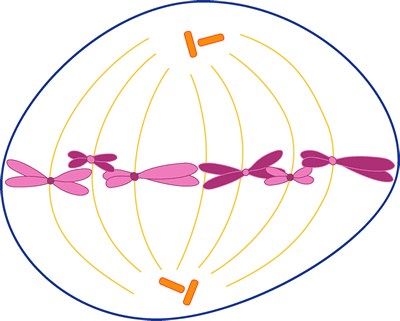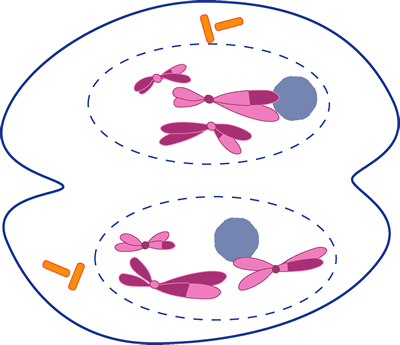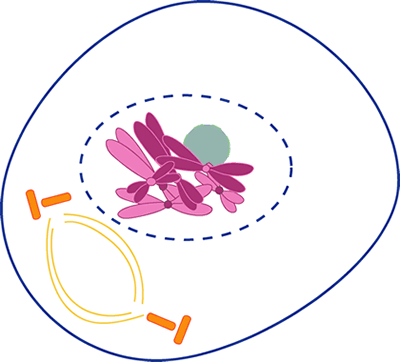What is Cloning?
1. Who is Dolly? Dolly is the clone that was cloned from another female sheep in 1997.
2. When a zygote divides into to separate cells, it is called: a two-celled embryo
3. Somatic cells are also called Diploid Cells (body cells).
4. In order to clone a gene, a gene is inserted into a Petri dish.
5. In order to create an embryo from a somatic cell, the donor egg cell must have its nucleus removed.
Click and Clone
6. List all the materials needed to clone a mouse. You will need a mouse to clone, an egg cell donor, a surrogate mother, a microscope, a Petri dish, a sharp pipette, a blunt pipette, and chemical to stimulate cell division.
7. Place the following steps in the correct order.
4 Stimulate cell division
6 Deliver baby
2 Remove and discard the nucleus from the egg cell
1 Isolate donor cells from egg donor and germ cell donor
3 Transfer the somatic cell nucleus into the egg cell
5 Implant embryo into a surrogate mother
8. There are two time gaps in the process of cloning. What are they? The first is that the new DNA needs to adjust to the new egg cell and the second is that the cell needs to divide a few times before it can be implanted.
9. What color with the cloned mouse be? Brown What is the name of this mouse? Mini-Mimi
Why Clone?
10. Why is cloning extinct animals problematic? Cloning extinct animals could be problematic because it may be difficult to find well preserved DNA from the extinct animal. Finding a closely related animal to be a surrogate mother.
11. What are some reasons a person might want to clone a human? Reasons someone might want to clone a human include helping infertile couples have children, helping gay couples have children, and replacing a dead child.
The Clone Zone
12. What animal was cloned in 1885? In 1885 sea urchins were cloned.
13. How did Spemann separate the two cells of the embryo of a salamander in 1902? He used embryo twinning. To do this he used a nose hair and baby hair tied together and split the two in half.
14. The process of removing a nucleus is called enucleation.
15. In 1952, the nucleus of a frog embryo cell was placed into a donor cell. Did it work to clone the animal? No, the few cloned tadpoles grew abnormally.
16. Can the nucleus of an adult cell be injected into an egg cell and produce a clone? Yes, there was no loss of genetic material when using adult cells.
17. Why are mammals hard to clone? Their DNA is very complex and mammals oftentimes develop differently depending on environment.
18. What were the names of the first two cloned cows? Fusion & Copy
19. In what year was the National Bioethics Advisory Council formed? 1995
20. The first mammal clone to be produced from an adult (somatic) cell? Dolly the sheep
21. What do scientists do to adult cells to make them "behave" like embryos? They "reboot" the cells.
22. Transgenic, cloned sheep were used to produce what medical protein? They produced human clotting factor IX protein.
23. What is a stem cell? A stem cell is a cell that every cell in the body starts out as. A stem cell can become any cell your body needs.
Cloning Myths
24. Briefly describe in your own words, why CC the cat was not identical in color to Rainbow, even though she was a clone. When Rainbow was young, one entire X chromosome was turned off which caused her to have orange hair instead of black. When she donated cells to CC the X chromosome that was turned off in Rainbow was turned on in CC which caused her to have black hair.
25. What is "nature vs nurture"? Nature vs nature means that even though your genes determine your traits, environmental factors can impact your personality or physical appearance. An example of this is identical twins, they may look slightly different and can have entirely different personalities.
Is it Cloning or Not?
26. For each of the following scenarios, indicate YES (it is cloning) or NO (it is not cloning)
No Sperm taken from a mole goat is combined with a female's egg in a petri dish. The resulting embryo is implanted into the female's uterus to develop
Yes A sheep embryo, composed of 16 cells, is removed from the mother's uterus and separated into indivudal cells. Each cell is allowed to multiply, creating 16 separate embryos, which are then implanted in different female sheep to develop to maturity.
No A cow with many desirable traits is stimulated with hormones to produce a number of egg cells. Each of these eggs is fertilized and implanted into a surrogate mother.
No In vitro fertilization
Yes Cell nuclei from an extinct wolly mammoth are placed into enucleated cow cells.
27. Define or describe each of the following processes (you may need to reset the Cloning or Not Screen)
Invitro fertilization: The Invitro process is when a mothers egg and a fathers sperm are fused together and planted back into the mother.
Embryo splitting: Embryo splitting is dividing a single embryo into many pieces. Those pieces produce genetically identical animals so it is considered a form of cloning.
Somatic Cell Nuclear Transfer: Somatic Cell Nuclear Transfer is a process where a nucleus that contains only half a genome (sex cell) is replaced with an adult cell of any kind to produce an identical clone.
Multiple Ovulation Embryo Transfer: Multiple Ovulation Embryo Transfer is a way to produce an animal with certain genetic qualities faster. They accomplish this by manipulating the animal hormonally to produce more eggs during ovulation.
Artificial Insemination: Artificial Insemination is the process of inserting sperm into an oviduct or uterus by unnatural means.
What Are the Risks of Cloning?
28. What is one reason why cloning animals has such a high failure rate? One reason clones fail is that the enucleated egg and the transfered nucleus may not be compatible.
29. What is a telomere and how does it affect cloned animals? When a DNA strand is copied, the DNA becomes shorter and shorter until you eventually die from old age. Because cloned animals formed from adult DNA, their DNA could already be shorter than normal and shortening their lives. But, some studies have shown that some cloned animals have LONGER strands of DNA while others have far shorter strands than normal.
30. Pick one of the questions to ponder and ....ponder it. Write a brief essay on your thoughts and opinions. I chose to write my brief essay on the problems that cloned animals can face. From the time the clones cells are being produced, they already face a large number of problems like the enucleated egg and the transfered nucleus not being compatible, the egg of the newly transfered nucleus not dividing properly, the implanted embryo may fail, or even problems with the pregnancy itself. There are so many problems in fact that out of every 1000 clones attempted, only 30 clones survive, a 3% survival rate. At birth, clones can be much bigger than normal counterparts. This is called Large Offspring Syndrome (LOS). LOS can lead to abnormally large organs that will eventually lead to breathing, blood flow, and other issues. Finally, they will most likely live a shorter life than their natural counterparts. As I said before, "When a DNA strand is copied, the DNA becomes shorter and shorter until you eventually die from old age. Because cloned animals formed from adult DNA, their DNA could already be shorter than normal and shortening their lives. But, some studies have shown that some cloned animals have LONGER strands of DNA while others have far shorter strands than normal." Altogether, their lives are short, painful journeys that no animal or human should endure.
Source: http://learn.genetics.utah.edu/content/tech/cloning/



